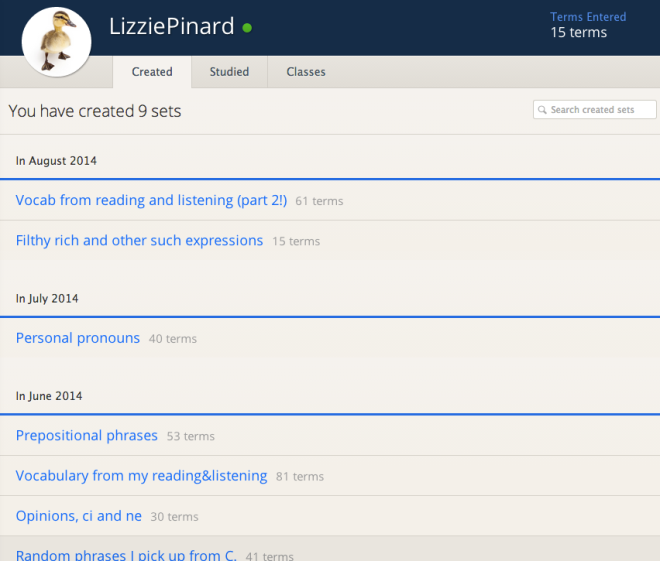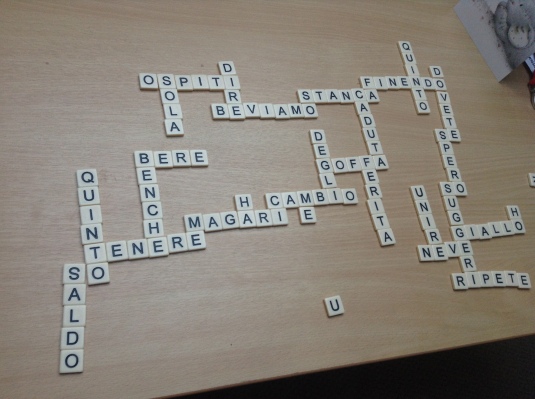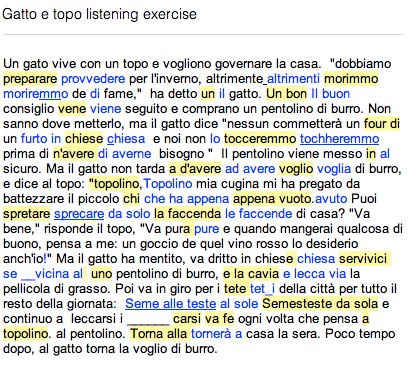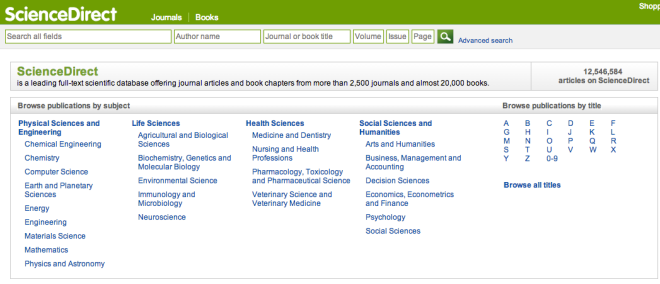
Turn those pages! Take from an advanced Google images search, licensed for commercial reuse with modification
In part 1 of this series, I reflected on the benefits of reading extensively, from the point of view of my own language learning experience, and in part 2 I discussed the process I had used to initiate my “reading project” with my adult classes (pre-intermediate to advanced) at IH Palermo language school. Following on from my British Council Teaching English webinar on Learner Autonomy, here is part 3. In this post, I look at the outcomes of the reading project and explore the links between this project and learner autonomy, which was the goal that drove its creation.
The benefits of reading extensively are well-documented, and in an EFL context where exposure to target language is limited, the regular exposure to language in use that reading extensively can provide is even more valuable to learners. But how do we get learners reading extensively in their own time? I started to explore this question last year, when I started working at IH Palermo, having explored a lot of the theory related to learner autonomy and motivation while studying at Leeds Met. I felt that if I could get learners reading independently, of their own volition, over an extended period of time, then this could be one way in which they could learn autonomously. And so, in collaboration with my learners, the Reading Project was born.
Fast forward several months and those courses came to an end. I gave learners a feedback form to complete.
- Out of 23 students who completed the forms: (there should have been 6 more but they were absent from the classes on the day I handed out the forms for completion) 19 said they read more in English now than they did before. They circled between 4 and 6 on the Likert scale I used for this question.
- Breaking this down: of these 19, 6 students circled 6, 6 students circled 5 and 7 students circled 4.
- In terms of level: The lowest level class (Pre-Intermediate), all learners circled 4 and upwards, with the majority 5’s and 6’s, while in the Upper Intermediate class, only one learner out of 9 circled below a 4. The lower number in the Up Int class and the three lower numbers in the Advanced class were qualified by their explanation, in the space provided, that they already read a lot in English before. I’m pretty sure the Reading Project won’t have done those few learners who already read a lot any harm, while the majority who didn’t may have benefited a lot.
The feedback form also asked learners if they would continue to read in English after the course. All respondents except one circled “yes”. Whether they do actually continue to read is, of course, an unknown quantity at this point, but the positive thing is that the desire is there. I bumped into one of the students the other day and she spontaneously started telling me that she was still reading and listening to audio books, so that’s at least one who continues – at least for now! 🙂
Obviously numbers can be deceptive, or circled at random. However the comments learners wrote in the space provided for this, or in the end-of-course reflective pieces I asked them to write, tallied with the numbers circled. NB, I did not stipulate what aspects of the course the learners were to comment on, it was a completely free piece of writing so learners were free to choose what to highlight. Here are a few comments from the learners, written on their feedback forms or in those end-of-course reflective pieces:
Advanced learners:
“Definitely yes. I wasn’t used to read in English, now I understood that it’s not impossible as I thought, I’ll continue reading.”
“I think that reading in English is useful to learn new vocabulary but it needs time”
“I have always read in English whenever I felt a need to do so, not really because I found it helpful. The reading project has surely helped me read more in English”
“One of the aspects of the course I have appreciated most, was the encouragement our teacher has given us to read as much as possible from different sources such as books, short stories and so on; I also liked the follow up in the classroom when we were comparing our ideas and emotions.”
“The reading project was the thing I appreciated the most. It helped me having a start to read in english, which is something that i wasn’t used to, but now i’m sure i’ll continue”
Upper Intermediate:
“I’ll continue because it’s more pleasurable than reading in Italian”
“Well why should I learn English then?”
“I found reading in English very useful, so I think it’s important to keep reading in order to improve my English”
“Because I’ve found it useful to improve my language and vocabulary”
“I would like to continue, although in this period I don’t have a lot of time”
“I understood the importance of reading in English”
Pre-intermediate:
“I like reading in English. I found a new word: English Lettereture. I choose amazing English book and I thanks you for this reason.”
“I want to continue to read in English because I think it’s a good tool to learn new words”
“Yes, because I understood that it is useful, and because now I like reading a book in English”
“I think that it is important and I like read in English”
Overall, then, I feel that it was a successful project: Lots of reading happened on a regular basis, learners remained motivated, to the extent that they express desire to continue reading beyond the end of the course, and, importantly, showing recognition/understanding of how reading can benefit them. Learners also set their own goals and experimented with different approaches, within a supportive environment.
What made it so, other than the wonderful learners I was working with?
- Through the initial discussion questions, I drew learners’ attention to the benefits of reading extensively in English, as well as the validity of different text types (e.g. authentic text vs graded readers vs bilingual versions) and approaches to reading. They understood the value of it and so were keen to embark on the project. Insecurities of the “is this type of book as good as that as type of book?” and “if I read like this <describes approach>, is it bad?” sort were also dealt with in this discussion.
- Free choice of reading material meant that nobody had to read anything that didn’t interest them. One man’s meat is another man’s poison…
- The subsequent discussions, at regular intervals (once a week), helped learners maintain their motivation to keep on reading. These discussions addressed potential issues. For example in one of the discussions we discussed The Rights of the Reader which emphasised, amongst other things, that it was ok to stop and change books if you weren’t enjoying it, amongst other things. This is important because it is obviously far better for a learner to recognise that it may be the book that is the issue, rather than reading in English itself, and try changing books rather than give up. This applies both during the reading project and beyond.
- Another benefit of the regular discussions was that learners often brought their books along to these, excited to show everybody what they had decided to read, and other learners were interested to see what their classmates were reading and hear where they had got these books from. This show-and-tell element kindled interest in those who were slow to get involved. And, of course, when learners finished a book in English (sometimes for the first time in their lives), they were always delighted to share that news with everybody.
- Goal-setting also helped learners maintain their motivation. Setting their own goals gave learners more ownership over the process and project. Obviously this was scaffolded rather than independent, but hopefully as learners recognise the value of it, and learn how to do it effectively, it becomes a tool they can use independently beyond the end of the course.
- There was no stick: learners didn’t get in to trouble for not meeting their goals, or not being able to read so much one week compared to another week. Conversely, whatever reading they did manage to do was met with enthusiasm (by both myself and their classmates!). Through this they learn that it is ok not to be super-successful ALL the time, that just because you have lots of commitments (e.g. exams or work-related commitments) during a period, doesn’t mean you are a failure and should give up altogether. They also learn that every little helps.
- It wasn’t homework, it wasn’t compulsory, it wasn’t a chore, it was something they chose to do. They also chose how much to do, when to do it etc. In this way, they found out how to fit it into their life in the way that best suited them. Of course initially not everyone was super keen, there are always one or two who are a bit skeptical, but then a couple weeks down the line, they turn up in class clutching a book, ready to tell their classmates that they are reading now too! I prefer to let them come to it themselves, rather than forcing it on them. If it is a choice they make, they are more likely to continue.
- I let them reflect on, and evaluate, the project at the half-way point, asking them what they thought would improve it. One of the classes decided to add to it: alongside reading their books, they decided to take turns posting an article link to Edmodo so that everybody could read it between classes, discuss it on Edmodo by responding to the original post and have a few minutes in class once a week to discuss it face-to-face. Again, this was giving them ownership of the project and some say in how their class time be used.
I have just started again with a new lot of courses (several pre-intermediate, an upper intermediate and an advanced) and have so far made a little change to my process:
- Before asking them to set goals, I explicitly elicited different types of goals that they could make, so as to make it easier for them to make goals. What was interesting is that with two classes of the same level (pre-int) at the same point in the course, one class was able to supply, between them, all but one of the goal ideas I’d thought of, while the other class were a bit blank and needed more support. All classes are different and it’s important to be ready to respond to what a particular class needs. In the first class, they’d all found something to read by the second weekly discussion (the first post-being encouraged to find something), in the blank class, only one had. However, the following week, the majority of the blank class had found something to read and they are starting to learn to set suitable goals. Such inauspicious starts are just as normal as the keen bean starts, the thing is to persevere gently with it.
- Another change is that I have introduced the project right at the beginning of the course, whereas last term, I only had the idea, and developed it, part way through! This will hopefully give learners longer to benefit. Certainly in my semi-intensive class, a learner who had never read a book in English before is now on her fourth and her confidence has blossomed along with it.
How does The Reading Project tie in with learner autonomy development?
The Reading Project was one of the strands of my learner autonomy development project, the other two being use of collaborative online platforms (Edmodo and class blogs) and my Experimentation with English Project. Obviously learner autonomy looks different in different contexts. In my context, my goal was to enable learners to harness effectively all the resources at their disposal outside of class time, so that they could benefit from maximum exposure to the target language and from using it a variety of ways. The Reading Project helped raise learners’ awareness of different approaches to extensive reading and the benefits of extensive reading. Some learners changed their dominant approach, entirely of their own volition, as a result of discussing with other learners who used different approaches, experimenting with a new approach and finding it more effective. The project also helped them use goals as a means of managing their motivation in the long term by setting short term goals which are challenging yet attainable. Finally, it offered opportunity for reflective discussion regarding their reading progress and how they felt about it. It was a regular process of goal setting, reflection and evaluation of progress.
All I did, as the teacher, was provide the opportunity for discussion (about 10 or so minutes at the start of a lesson – except when setting the project up, the first two discussions needed 15-20 minutes) and feed in questions for discussion, using this as a tool for generating interest in the project and then maintaining that interest and motivation as the course wore on. I elicited as much as possible from the learners, in terms of benefits, different approaches, goal types, pros and cons of different text types etc and just fed in the odd little bits that were missing between them as a group. In this way, by starting with the learners’ knowledge and experience, they were able to learn from each other: as a group they had a much bigger knowledge and experience base to draw on than as individuals. The discussions also enabled their motivation as a group to be harnessed, with those less motivated benefitting from those with more motivation, leading to a net result of greater overall group motivation levels. Of course individual motivation levels fluctuate, so different learners benefited from “feeding off” the group motivation at different times.
I think an important aspect of the project is that it became very much a part of the course. The discussions and goal-setting happened at regular intervals. I believe that if you embark on such a project (which isn’t very demanding in terms of teacher input/preparation) it is important to persevere and not let it fall by the wayside. Another very important aspect is that there is no obligation coming from the teacher. The teacher is in the role of enabler in this project, opening up an on-going dialogue with the learners and joining them in their journey towards greater autonomy. The journey isn’t smooth, it’s more of a rabbit burrow than a bridge (thinking of the oft-used expression of “bridging the gap” used in association with autonomy!) and learners have to work hard to keep burrowing. By bringing the project back into the classroom at regular intervals, learners are given support in their efforts, as well as being helped to become better at using various tools to make the process easier for them.
Obviously my approach won’t be applicable in all contexts. As a teacher, it is important to be sensitive to your context, which is why I believe Smith’s (2003) strong methodology is very effective. Therefore, I wouldn’t recommend blindly applying my Reading Project in any context. What I would recommend is:
- careful consideration of context and learning goals.
- adjusting your own mindset so that you are constantly on the look-out for ways to help your learners become more autonomous.
- working with your students to identify ways of meeting those learning goals. If you have ideas, share them with your students and see what they think. Do this in such a way that they are fully aware of the potential benefits of whatever it is you have in mind: guided discussion is invaluable for this.
- differentiating between ideas that require autonomy and ideas that support its development. If you have one that falls into the former category, think about how to scaffold students’ use of it.
- not forcing anything on your students. If you have helped them become aware of the benefits and not all of them want to do it, let those who are keen embark on it and see what happens.
- recognition of the role of motivation and being aware of how you can help learners manage their own individual motivation and harness their motivation as a group.
I would be very interested in hearing about your current or future learner autonomy-related projects: please do comment on this post either to tell me about them or to post a link to where you have written about them.
References:
Smith, R. (2003) Pedgagogy for Autonomy as (Becoming) Appropriate Methodology in Palfreyman, D and Smith, R. [Ed] Learner Autonomy Across Cultures. Palgrave Macmillan. Basingstoke.





























